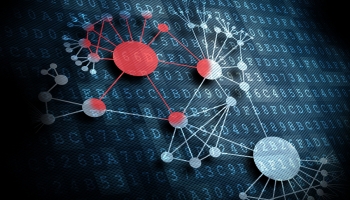The Secret to a Safer Financial Institution: Security Integration
Increasing connectivity also means the risk of cyberattacks
- |
- Written by Eric Zei, Enterprise Business Development Manager, Honeywell Security

Connectivity fueled by the internet of things has opened doors for many industries; and as Gartner forecasts, 20.4 billion connected devices will be in use worldwide by 2020. These technologies will continue to disrupt businesses well into the future – especially within the banking and finance sector. Increasing connectivity also means the risk of cyberattacks, potentially setting a chain of events in motion that could negatively impact a financial institution’s operations.
To combat these increasingly sophisticated threats, resources are oftentimes reallocated from another important area – the physical security of infrastructure. Yet, according to a recent Honeywell survey of 500 CI/SIOs, IT directors and security directors across North America, 44% of respondents reported that incidents with visitor/access systems increased over the last year.
This demonstrates how crucial it is that banks find a way to prioritize and handle physical security – and the secret to success is by implementing a holistic, integrated system with the capability of tackling both physical and cybersecurity measures.
The unforeseen results of digital banking
Digital banking is and will continue to grow. While this makes banking convenient for consumers, it has increased the number of platforms that could fall vulnerable to an attack from a cybercriminal.
Banks must become more cyber-aware than ever before. But to meet these increasingly complex security needs in the banking and finance industry, integrating both physical and cybersecurity solutions is crucial as these institutions must be able to connect all enterprise technologies to keep valuable assets, including personnel, as safe and secure as possible.
With reputations at stake, customer trust is highly valued in the banking and finance industry – perhaps even more so than in other industries. When an institution is compromised physically or digitally, it can severely damage the company’s reputation among existing and prospective customers. Beyond potentially stunting growth, a tarnished reputation can also hinder the attraction of top-rated talent. The less banks are willing to integrate, the easier vulnerabilities can be exploited and companies suffer.
Accounting for all Employees – Past and Present
While cyberattacks are often the most publicized, the issues do not end there for banking and financial institutions. Exploitation of building access systems from both a cyber and physical security standpoint is also a rising concern, as (48%) of respondents in the Honeywell survey indicated that incidents with employee access systems have increased over the last year alone.
These incidents often involve ex-employees that, as a result of a non-integrated or outdated security system, retain access rights due to delays updating security databases. Not only does this leave businesses open to theft and corporate espionage, it can undermine cybersecurity and data integrity if an ex-employee was to access IT systems.
In an effort to combat these issues and tighten access control security, institutions should consider partnering with broader business software like HR systems. Integrating with a system of this magnitude would allow a bank to protect themselves and their customers by taking preventive measures to the next level, such as revoking employee access credentials as soon as they are removed from payroll. This simple action prevents unauthorized access to not only physical locations, but to IT systems as well.
Beyond connecting with HR systems, implementing additional multifactor authentication technologies like biometric recognition software can provide extra cover, serving as a safeguard should employees’ ID cards become lost or stolen for potentially harmful uses.
By streamlining and improving access control via an integrated security system, businesses can ensure that individuals that enter the building not only fit the proper profiles necessary, but also have the skills required to perform their roles.
Keeping up with compliance
Another added benefit of an integrated security system is its ability to help busy IT and security professionals and facility managers within the banking and finance space navigate the fast-paced, constantly changing world of regulatory compliance.
Penalties can be severe for banks if they fail an audit, from hefty fines to revoked business licenses. This makes it incredibly important when financial institutions select an integrated technological solution to choose a provider with the ability to pull historical data from a wide range of sources and generate reports to provide indisputable confirmation of compliance.
Integration made easy
Whether a financial institution is looking to increase their physical security efforts, more effectively monitor cyber-threats or streamline their compliance efforts, having an integrated security system in place is key. The ultimate goal for improving banking security lies with having the entirety of their systems, from facilities to operations, all monitored at once and from a single screen.
In an industry where institutions’ reputations are based on trust, more visibility from an integrated security system comes maximum control, allowing a financial institution to ensure that its people, assets and facilities operate effectively and safely.
Eric Zei, Enterprise Business Development Manager, Honeywell Security
Tagged under Risk Management, Compliance, Security, Compliance/Regulatory, Cyberfraud/ID Theft, Big Data, Outsourcing/Cloud, Tech Management, Mobile, Online, Operational Risk, Technology, Financial Trends, Feature3, Fintech, Feature,













